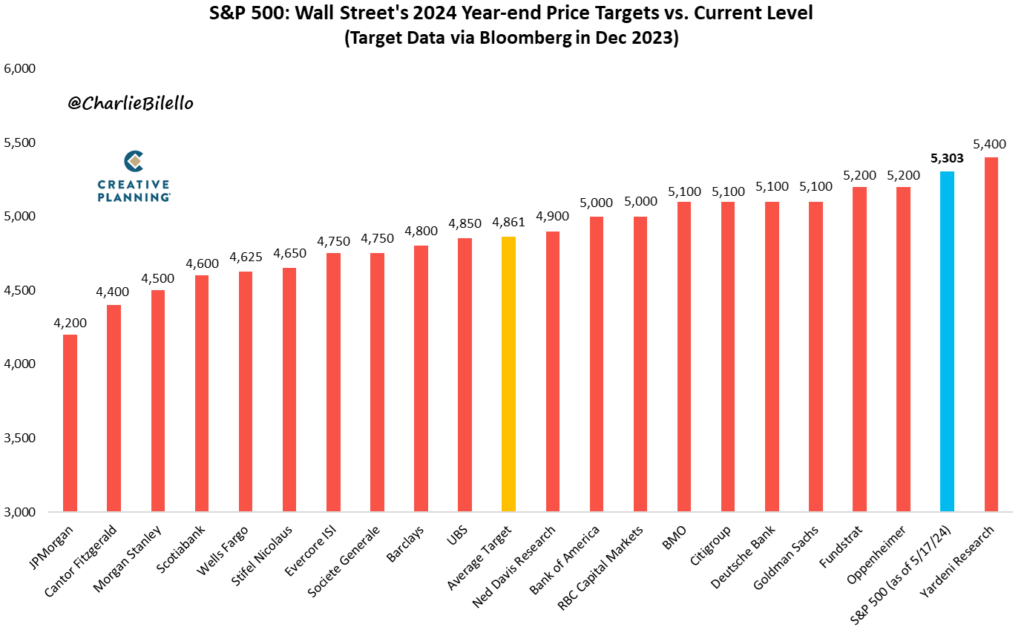One of the biggest bears on Wall Street, Mike Wilson from Morgan Stanley (NYSE: MS), has increased its 12-month target price for the S&P 500 by 20%, from 4,500 to 5,400.
This shift follows Morgan Stanley’s abandonment of previous predictions for a market pullback. Notably, the Chief U.S. Equity Strategist at Morgan Stanley had been predicting significant downturns in the stock market for several years. He has consistently warned of potential crashes due to various economic factors, including the risks of a recession and high inflation.
Back in 2022, he cautioned that U.S. stocks could fall another 20% if economic growth reversed.
The latest target is based on a 19 times P/E multiple on projected EPS of $283 by June 2026. They expect earnings growth of 8% in 2024 and 13% in 2025, driven by revenue growth and margin expansion, particularly from AI advancements.
Key sectors benefiting from AI include Software and services, Consumer Services, Health Care, Financial Services, and Media and entertainment.
Wilson predicts a 20% variation from current levels
Wilson predicts a modest valuation compression from 20 to 19 times as earnings rise. Morgan Stanley updated their bull and bear case targets to 6,350 and 4,200, respectively, reflecting a potential 20% upside or downside.
They recommend a balanced investment approach, favoring quality cyclicals and growth stocks. Industrials have been upgraded to overweight and maintain long positions in defensive sectors like Consumer Staples and Utilities.
Large caps are expected to outperform small caps due to stronger earnings, durable margins, and healthier balance sheets.
S&P 500 looks set to surpass even the most bullish expectations
At 5,303, the S&P 500 is currently 9% above Wall Street strategists’ average year-end price target for 2024, which stands at 4,861.
Considering there are more than six months before year-end, the S&P 500 looks set to surpass even the most bullish analyst expectations.

Morgan Stanley updated the average target to 5,400, making it one of the bullish big financial institutions. This marks a notable reverse from the previous standpoint.









